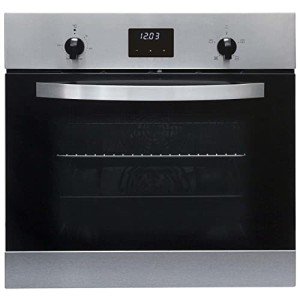Understanding Cookers and Hobs: A Comprehensive Guide
Cooking is an important aspect of every day life, and the advancement of kitchen devices plays a considerable role in how efficiently and successfully individuals prepare their meals. Among these appliances, cookers and hobs are two of the most essential instruments found in modern cooking areas. This post looks into the differences between cookers and hobs, analyzes their numerous types, and uses insights on their features, upkeep, and selection procedure.
What are Cookers and Hobs?
Cookers
Cookers are detailed kitchen appliances created for cooking tasks, typically integrating an oven and a hob. They can be found in various setups and types, accommodating diverse cooking needs and preferences.
Hobs
Hobs, on the other hand, are more concentrated devices primarily utilized for boiling, frying, and other stovetop cooking techniques. Hobs can be standalone units or an integrated part of bigger cookers.
| Function | Cookers | Hobs |
|---|---|---|
| Function | Integrates oven and hob | Stovetop cooking just |
| Design | All-in-one unit | Separate unit or integrated |
| Types | Electric, gas, double fuel | Gas, electric, induction |
| Installation | Permits for more flexibility | Built into the counter top |
| Price Range | Usually higher | Differs extensively |
Kinds of Cookers
1. Electric Cookers
Electric cookers use electrical power as their primary power source. They often include a built-in oven and numerous cooking zones on the hob.
Advantages:
- Even heat circulation
- Readily available in different designs (e.g., freestanding, integrated)
2. Gas Cookers
Gas cookers run on natural gas or melted petroleum gas (LPG). They use immediate heat control, making them a favorite among expert chefs.
Advantages:
- Instant heat adjustments
- More inexpensive operational costs
3. Double Fuel Cookers
Double fuel cookers combine the heat of gas with the effectiveness of electric ovens. This setup permits the best of both worlds, providing control and constant results.
Benefits:
- Flexible cooking choices
- Accurate control over stovetop cooking and baking
4. Variety Cookers
Variety cookers are bigger and more effective than basic cookers, featuring multiple ovens and hobs for extensive cooking jobs.
Advantages:
- Ideal for large households or cooking for occasions
- Uses different cooking alternatives in one device
Types of Hobs
1. Gas Hobs
Gas hobs are preferred for their quick heating and strong flame, making them excellent for burning and stir-frying.
Benefits:
- Instant heat and control
- Suitable with any kind of pots and pans
2. Electric Hobs
Electric hobs warm up utilizing electric coils or glass-ceramic surfaces, offering a modern-day appearance and efficient cooking.
Advantages:
- Easier to clean up
- Consistent surface area suitable for numerous pots and pans
3. Induction Hobs
Induction hobs utilize electromagnetic fields to heat pots and pans directly, using fast and energy-efficient cooking.
Benefits:
- Safe (cool surface area after getting rid of cookware)
- Energy-efficient and accurate
4. Solid Plate Hobs
These conventional hobs utilize strong electric plates that warm up gradually.
Advantages:
- Rugged and long lasting
- Normally more economical than other types
Secret Features to Consider
When choosing a cooker or hob, numerous features should be taken into account:
- Size and Space: Consider the size of your kitchen and the amount of workspace required.
- Cooking Style: Choose based upon choice-- gas for control, induction for efficiency, and so on.
- Effectiveness Ratings: Look for energy-efficient models to decrease energy expenses.
- Alleviate of Cleaning: Smooth surface areas assist in simple upkeep.
- Safety Features: Automatic shutoff, flame failure gadgets, and kid locks boost safety.
Upkeep Tips
Preserving cookers and hobs extends their life expectancy and ensures safe operations.
- Routine Cleaning: Wipe down surface areas after usage to prevent accumulation.
- Check Seals: Check oven door seals regularly for wear and tear to keep efficiency.
- Service Regularly: Schedule professional servicing at least when a year.
- Appropriate Cookware: Use cookware proper for your hob type to prevent damage.
Frequently Asked Questions (FAQs)
What is the difference in between a cooker and a hob?
A cooker combines an oven and hob in one system, while a hob is usually a standalone device for stovetop cooking.
Do I need an expert to set up a gas cooker or hob?
Yes, professional installation is recommended for gas home appliances to ensure safety and compliance with local regulations.
Can I use any kind of pots and pans on induction hobs?
Induction hobs need magnetic pots and pans. Stainless-steel or cast iron pots work best. internet site -magnetic materials will not heat up.
Are electric cookers more energy-efficient than gas cookers?
While both have benefits, electric cookers tend to be more energy-efficient general, especially with modern-day, high-efficiency designs.
How often should I clean my cooker or hob?
It is best to clean them after each usage and carry out a thorough cleansing weekly to prevent buildup and residue.
Understanding the differences, features, types, and maintenance pointers for cookers and hobs is necessary for any home cook. By choosing the ideal home appliance suited to their cooking requirements, users can enhance their cooking experience, making meal preparation an effective and satisfying chore. Whether going with the immediate control of gas or the smooth effectiveness of induction, picking the suitable cooker or hob can lead to a notably boosted kitchen experience.

